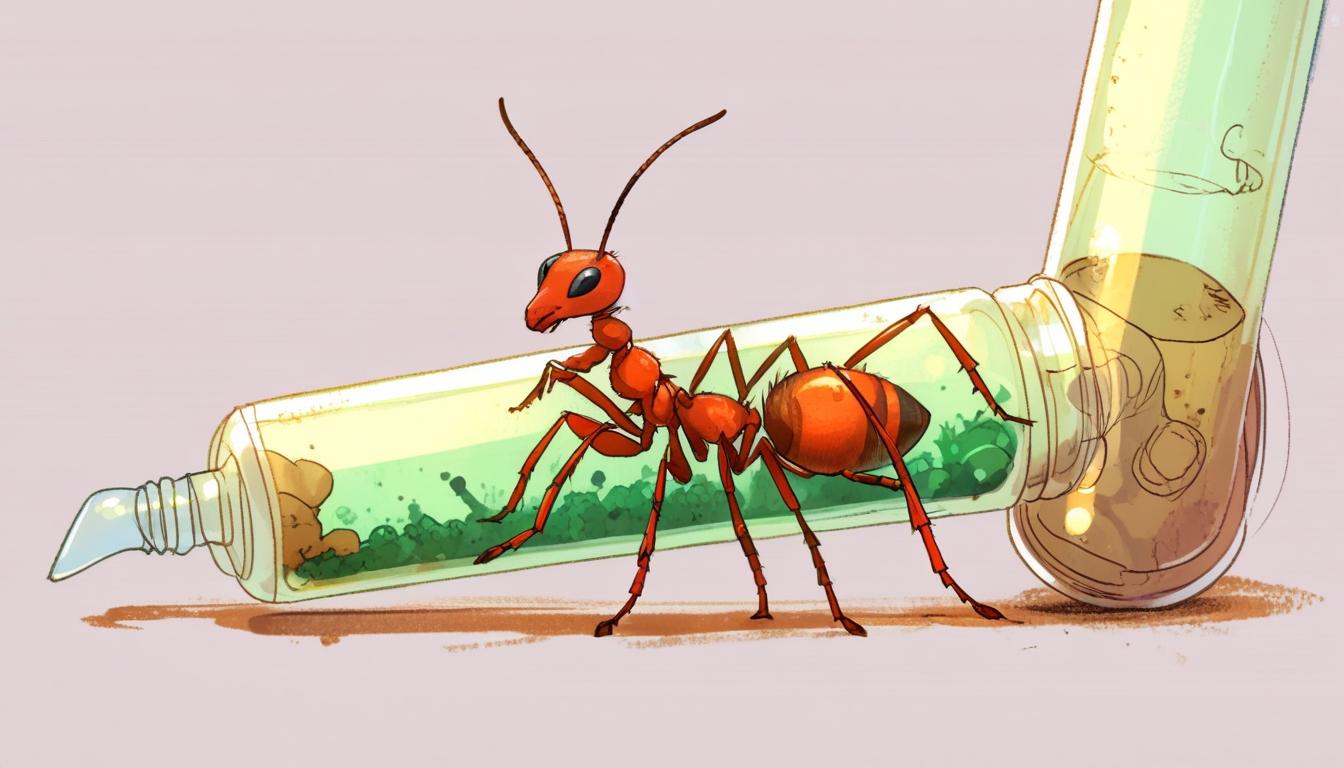In a striking illustration of the growing complexity of wildlife trafficking, four men were arrested in Kenya for attempting to smuggle over 5,000 ants, storing them in test tubes and syringes, presumably to sell as exotic pets. This case, while unusual, sheds light on an often-overlooked facet of wildlife crime that extends beyond the more notorious poaching of large mammals like elephants and rhinos.
Wildlife trafficking encompasses a broad scope, involving the illegal trade of various species, including insects, which are increasingly targeted due to rising demand from collectors and the exotic pet market. High-profile seizures of rare insects highlight this expansion; for instance, smugglers have been caught trying to transport specimens like rhino beetles and butterfly species across international borders. The focus on charismatic animals often distracts attention from the extensive exploitation of less conspicuous creatures, such as ants, which play vital roles in their ecosystems.
Globally, insect populations are experiencing a steady decline, exacerbated by factors like habitat destruction, climate change, and pesticide use. This situation is worsened by trafficking, which further threatens species already at risk. Certain ant species, for example, are classified as endangered on the IUCN Red List and cannot be legally captured or traded. The anathema ant serves as one such example of a critically endangered species deserving of protection under international law.
But the protections vary widely and enforcement can be inconsistent. Despite legislative frameworks that exist in many countries to safeguard wildlife, the reality is often starkly different. Recent operations, such as Interpol's global crackdown on wildlife trafficking, have emphasised the scale of the issue, showcasing numerous confiscations, ranging from primates to rhino horns, but less frequently recognising the smuggling of insects. Reports indicate that law enforcement agencies often consider wildlife crimes, including insect trafficking, to be lower priority compared to narcotics and human trafficking, which limits resources and attention allocated to this critical issue.
In addition to the ecological implications, the introduction of non-native insect species poses risks to local ecosystems. For instance, invasive species can outcompete native organisms for resources, disrupt food webs, and even introduce diseases. The legal ramifications for traffickers can be severe. A recent case saw defendants in Los Angeles pleading guilty for importing valuable brown sea cucumbers, facing up to 25 years in prison, underscoring the serious consequences related to wildlife smuggling.
Moreover, the clandestine nature of insect trafficking makes it difficult to track the problem's full extent. For every case that garners attention, numerous others likely go unreported, raising questions about public awareness and the urgency of addressing this aspect of wildlife crime. Studies indicate a need for both legal reform and increased public understanding to enhance the effectiveness of conservation efforts.
The recent Kenyan case, while seemingly isolated, is a symptom of a larger global problem. As long as there is profit to be made, organised crime will pivot towards such niches in the wildlife trade. This underscores a vital need for tighter regulations and improved enforcement mechanisms across the globe. Conservationists and lawmakers are urged to protect even the most overlooked species and strengthen international cooperation to combat this insidious trade.
Without concerted efforts, the valuable and intricate ecosystems that these species support may be at risk. Only through awareness and action can we hope to thwart the pervasive threat posed by wildlife trafficking, not just for charismatic animals, but for every creature that constitutes our shared planet.
Reference Map
- Paragraph 1: [1]
- Paragraph 2: [1]
- Paragraph 3: [1]
- Paragraph 4: [1]
- Paragraph 5: [1]
- Paragraph 6: [3]
- Paragraph 7: [4]
- Paragraph 8: [1]
- Paragraph 9: [1]
Source: Noah Wire Services
